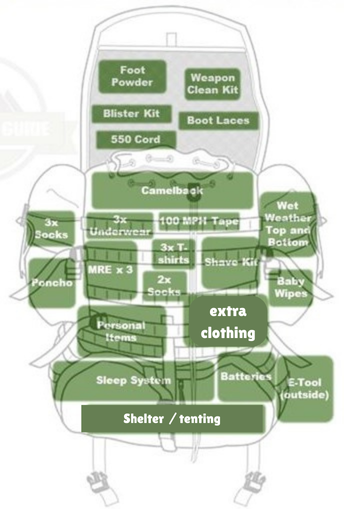Embarking on a long hike can be an exhilarating experience, but carrying an improperly packed backpack can quickly turn that joy into discomfort. Whether you're using hunting backpacks, survival backpacks, or military backpacks, proper weight distribution is essential to avoid strain, improve balance, and ensure a more enjoyable hike.
Why Weight Distribution Matters
When you're carrying all your survival gear for an extended trek, the way your backpack is packed affects your posture, stamina, and overall comfort. Uneven weight distribution can lead to shoulder, back, and hip pain, and increase the risk of slips and falls on tricky terrain. Choosing American-made tactical survival gear can also ensure higher quality, durability, and comfort for those long treks.
Here’s a breakdown of how to properly pack your backpack:
1. Bottom of the Pack – Light, Bulky Items
Place light and bulky items, such as your sleeping bag, sleeping pad, and extra layers, at the bottom of your pack. This creates a stable base and prevents the heavier gear from sinking over time. Whether you're packing a hunting backpack or survival backpack, placing bulky items at the bottom will also help your pack stand upright when set down.
2. Middle of the Pack – Heavy Items
In the middle section, pack the heaviest items like food, water, cooking gear, first aid kits, and any survival gear you're carrying. For military backpacks and tactical survival gear, this is also where you might store ammunition or other heavy supplies. Keep these items close to your back, centered between your shoulder blades, to maintain balance and prevent strain.
3. Top of the Pack – Medium-Weight Items
On top of the heavy gear, pack medium-weight items like clothing, tents, or additional survival gear. These items should be easy to access but still contribute to stability. Whether it's survival backpacks or military backpacks, proper balance here is key to staying comfortable on long treks.
4. External Pockets and Straps
Utilize your backpack’s external pockets for smaller essential items like snacks, maps, a headlamp, or a water filter. Make sure to distribute these items evenly to prevent any lopsided weight. For larger items like trekking poles or sleeping pads, use the external straps to secure them to the outside of your pack, ensuring they don’t throw off your balance.
Adjusting Your Backpack
Once packed, tighten the compression straps to keep everything in place, minimizing shifting as you hike. Adjust the shoulder straps, hip belt, and chest strap to distribute weight evenly across your body, whether you're hiking with hunting backpacks or military backpacks.
Proper weight distribution will help you hike longer, stay more comfortable, and remain balanced, even on uneven terrain.

